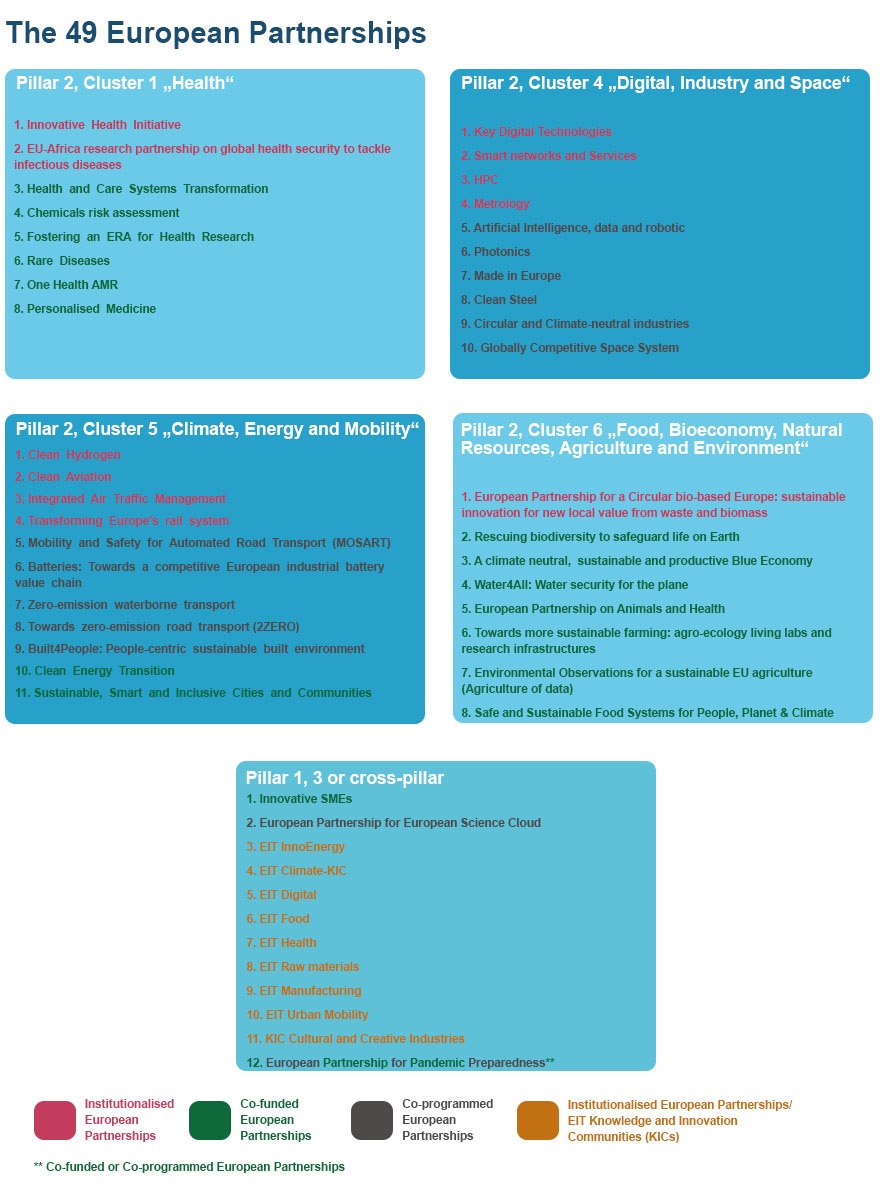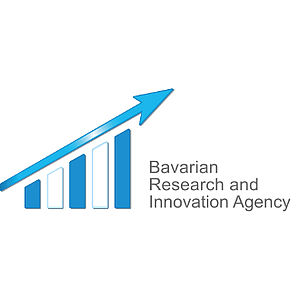
European Partnerships
European partnerships bring together the European Commission and private and/or public partners in order to coordinate some of the most pressing challenges, such as moving to a green economy, European digitalisation or pandemic preparedness. They avoid double investments and reduce the fragmentation of the EU research and innovation landscape. Moreover, they are an essential tool for realising the EU’s political priorities. However, European partnerships can only be funded if it can be proven that they achieve the policy objectives more effectively than Horizon Europe alone..
Horizon Europe is the main programme for implementing the European partnerships. Approximately 25 percent of the Horizon Europe budget and up to 50 percent of the Horizon Europe pillar 2 budget can be channelled into European partnership initiatives. The (financial) participation of the Member States and industry is essential.
Transparency, simplification, focus on impact
European partnerships are initiatives in which the EU Commission and private partners (e.g. industry) and/or public partners (e.g. ministries) jointly support (finance) the development and implementation of a research and innovation programme. The new concept of the European partnerships aims to make these initiatives more open and transparent than they were under Horizon 2020 and to simplify and rationalise the research and innovation landscape.
The European partnerships focus on the intended results and impacts on research and innovation as well as those which have already been achieved, so they are explicitly 'impact-oriented'.
Formats of European partnerships
There are three European partnership formats:
- Co-programmed European partnership initiatives between the EU, Member States/associated countries and/or other stakeholders are contractually regulated public-private partnerships (similar to previous contractual public-private partnerships, cPPPs under Horizon 2020). In co-programmed European partnerships, public and private partners develop a joint research agenda. In contrast to the co-funded partnerships, this is not tendered by a consortium, but is implemented through calls for tenders in the Horizon Europe work programmes to the research institutions as well as small and medium-sized enterprises (SMEs). Where applicable, other actors can apply for funding.
- Co-funded European partnership initiatives provide the European Commission and Member States with the opportunity to develop a joint research agenda and to jointly enforce it in part-financed calls for tenders and additional activities. The co-funded partnerships involve EU Member States as well as associated states and third countries, with research promoters and other public authorities at the core of the respective consortium (similar to the previous ERA-NETs, EJP and FET flagships under Horizon 2020). The consortium partners must commit to financial benefits or benefits in kind. Research institutions, SMEs and, if applicable, other actors can participate in the calls for proposals of these consortia and submit an application for funding.
- Institutionalised European partnership initiatives are actions under Articles 185 and 187 of the Treaty on the Functioning of the European Union (TFEU) and the Knowledge and Innovation Communities (KICs) of the European Institute of Technology and Innovation (EIT). They have their own legal basis in accordance with the legal basis of the EU research framework programme and require a legislative proposal from the European Commission for implementation. Institutionalised partnerships will only be implemented if other parts of the EU framework programme for research and innovation Horizon Europe, including other forms of European partnerships (co-funded or co-programmed), cannot achieve their objectives or expected impact. They have a long-term dimension and a high need for integration. The main objective of the EIT KICs is to address skills gaps. Important partners include higher education institutions, research organisations, companies and other interest groups. As a general rule, institutionalised European partnerships expect partners to also acquire significant investments from private and public sources, thereby multiplying and gradually replacing investments in order to achieve long-term financial independence.
Pillar 2 accounts for the main part of the 49 European partnerships. There are 8 in Cluster 1 'Health', 10 in Cluster 4 'Digitalisation, industry and space', 11 in Cluster 5 'Climate, energy and mobility' and 8 in Cluster 6 'Food, bioeconomy, natural resources, agriculture and the environment'. In addition, 9 EIT KICs are located in pillar 3. Finally, the 'European partnership for innovative SMEs' (pillar 3), the 'European Partnership for European Science Cloud (EOSC)' (cross pillars 2 and 3) and the 'European partnership for pandemic preparedness' (pillar 2) are funded. 31 European partnerships are enshrined in the 2021/22 work programmes and/or legislative initiatives, 8 in years 2023/24. The EIT KICs are set up in the longer term.
More about the European Partnerships in Horizon Europe on the web
Official website of the EU Commission
Website ERA-LEARN
Current information on ongoing calls can be found at www.era-learn.eu/network-information/call-calendar.
Are you planning a research or innovation project but don't have the funding yet? Turn your idea into reality and bring top Bavarian research to EU level! Contact our scientific officers for specific information on individual disciplines:
Health Research & Biotechnology
Information & Communication Technologies | Engineering & Natural Sciences
Social Sciences and Humanities | Security and Defence Research
Environment, Energy & Bioeconomy
SME Advisory Services





